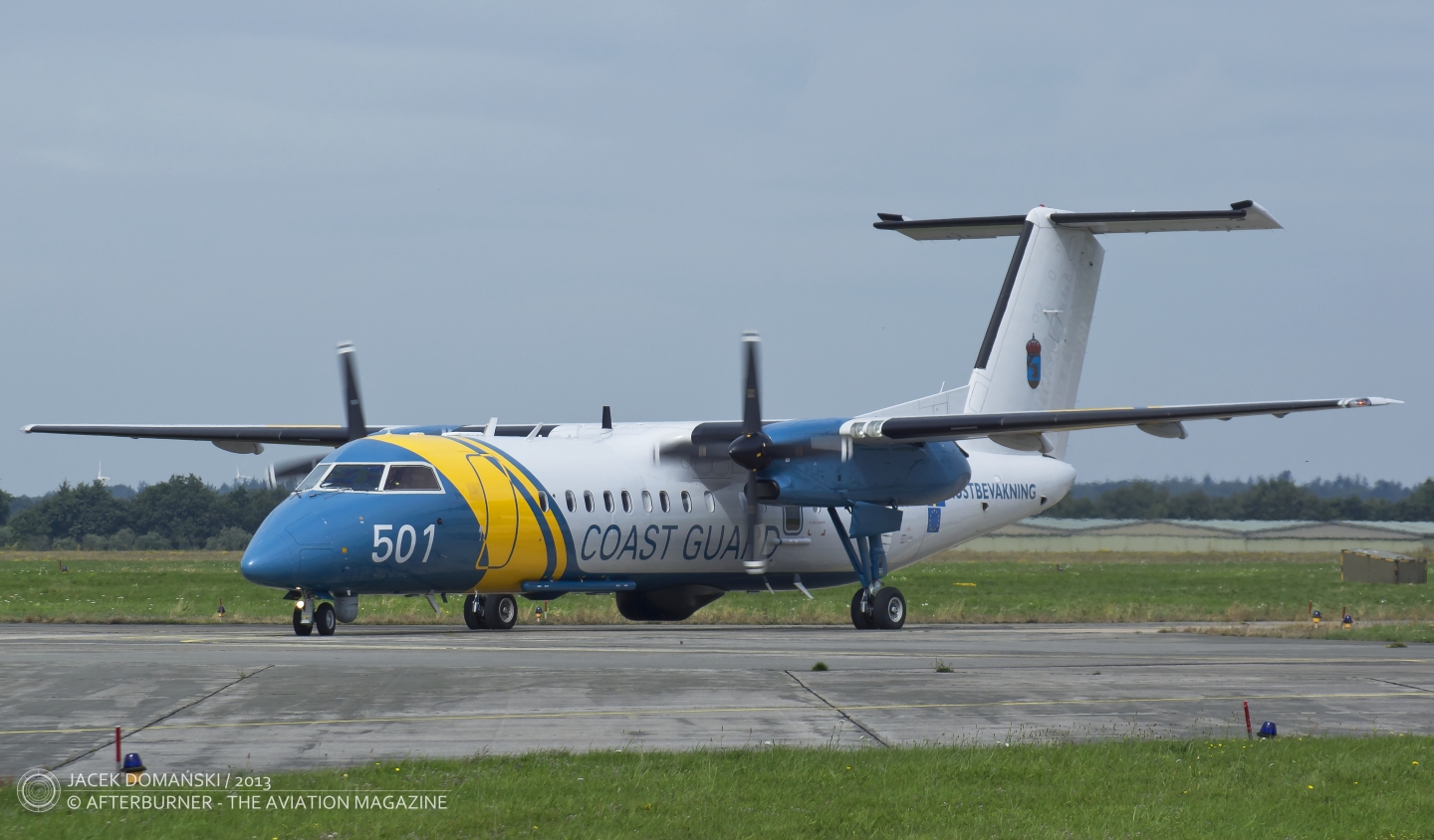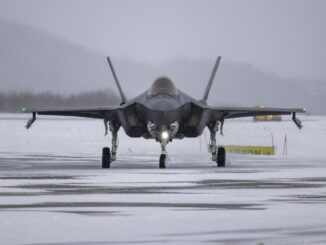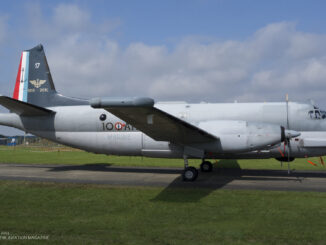
DHC-8 Q300 MSA ´501´ from the Swedish Coast Guard (Kustbevakningen) is visiting the Nordholz air force base in Northern Germany, August 2013.
Back in 2003, the Swedish authorities decided to replace the ageing fleet of Swedish Coast Guard maritime surveillance aircraft. Three CASA 212 aeroplanes already provided the surveillance duties for more than 20 years and the change was needed.
The tender procedure was finalized in December 2004 and the order was placed to Field Aviation company that had to deliver three new Bombardier DHC-8 Q300 aircraft, modified into Maritime Surveillance Aircraft.
The base for the new MSA aeroplane was well-known worldwide – up to the day the order was made, more than 700 ´Dash 8´ turboprop-powered regional airliners were produced, since the DHC-8 was introduced in 1984.
The maritime patrol variant of the airliner was not a novelty either. The first DHC-8 Q200 Maritime Patrol Aircraft entered the market already in 1996, when the Field Aviation and National Jet System of Australia won the tender for the new Surveillance Australia patrol aircraft. Another significant customer for the patrol variant of Dash 8 was the United States Department of Homeland Security, Bureau of Customs and Border Protection.
Unlike the US and Australian variants based on a Q200 (37 passenger) type, the Swedish maritime surveillance aircraft was manufactured of the larger Q300 aircraft, usually carrying 50-56 passengers. The crew includes two pilots and two operators, with the additional third operator seat that could be used by any observers, rescue leader, coordinator and internship.
Among the surveillance equipment an ELTA EL / M 2022 A radar can be found, with the range of 200 nautical miles, and a wide range of the optical sensors as Wescam MX 15 cameras, Cannon camcorder and camera, IR / UV scanner Argon AA 3503. A SLAR side radar allows to detect and document an oil emission on either side of the aircraft, within the 40 km range. The ships can be identified through Automatic Identification System (AIS), providing the DHC-8 crew the ship name, call signal, ship type, course, speed and other information.
An extra cargo door allows to drop the lifeboats (each aircraft is usually carrying two life rafts) or the paratroopers. Thanks to the additional integrated long range fuel tanks, the DHC-8 MSA range was extended to 2,200 nautical miles. In a low level surveillance mode, the aircraft can stay on patrol in the area of interest for more than seven hours.
The Swedish Kustbevakningen is a civilian government agency under the authority of the Ministry of Justice. Stockholm Skavsta Airport in Nyköping is the home base for all three Coast Guard aircraft. The surveillance operations are conducted along the Swedish coast and over the biggest Swedish lakes Vänern and Mälaren, around the clock and every day of the year.



